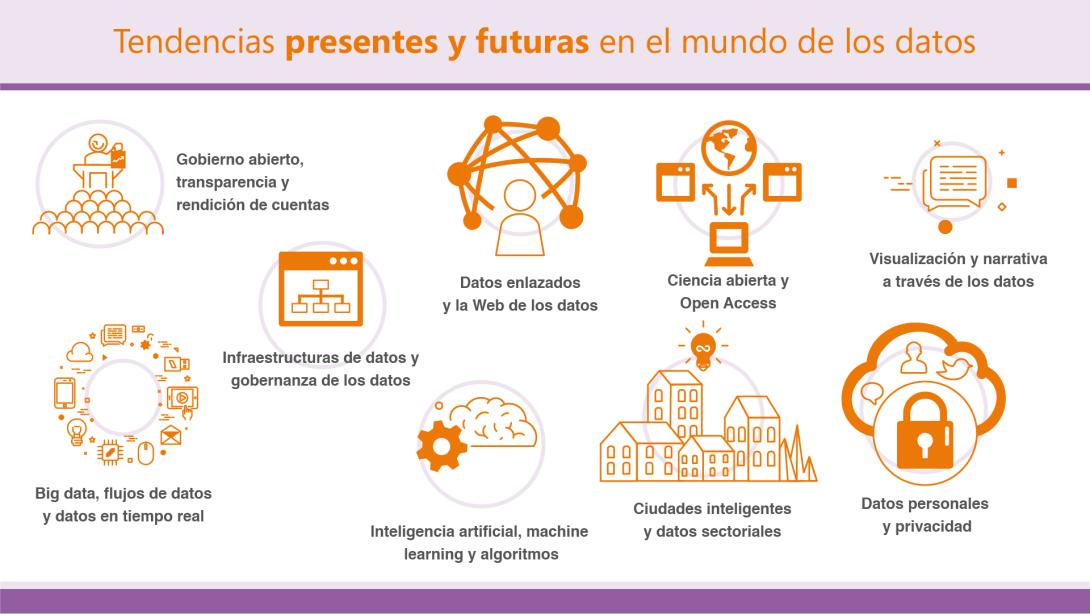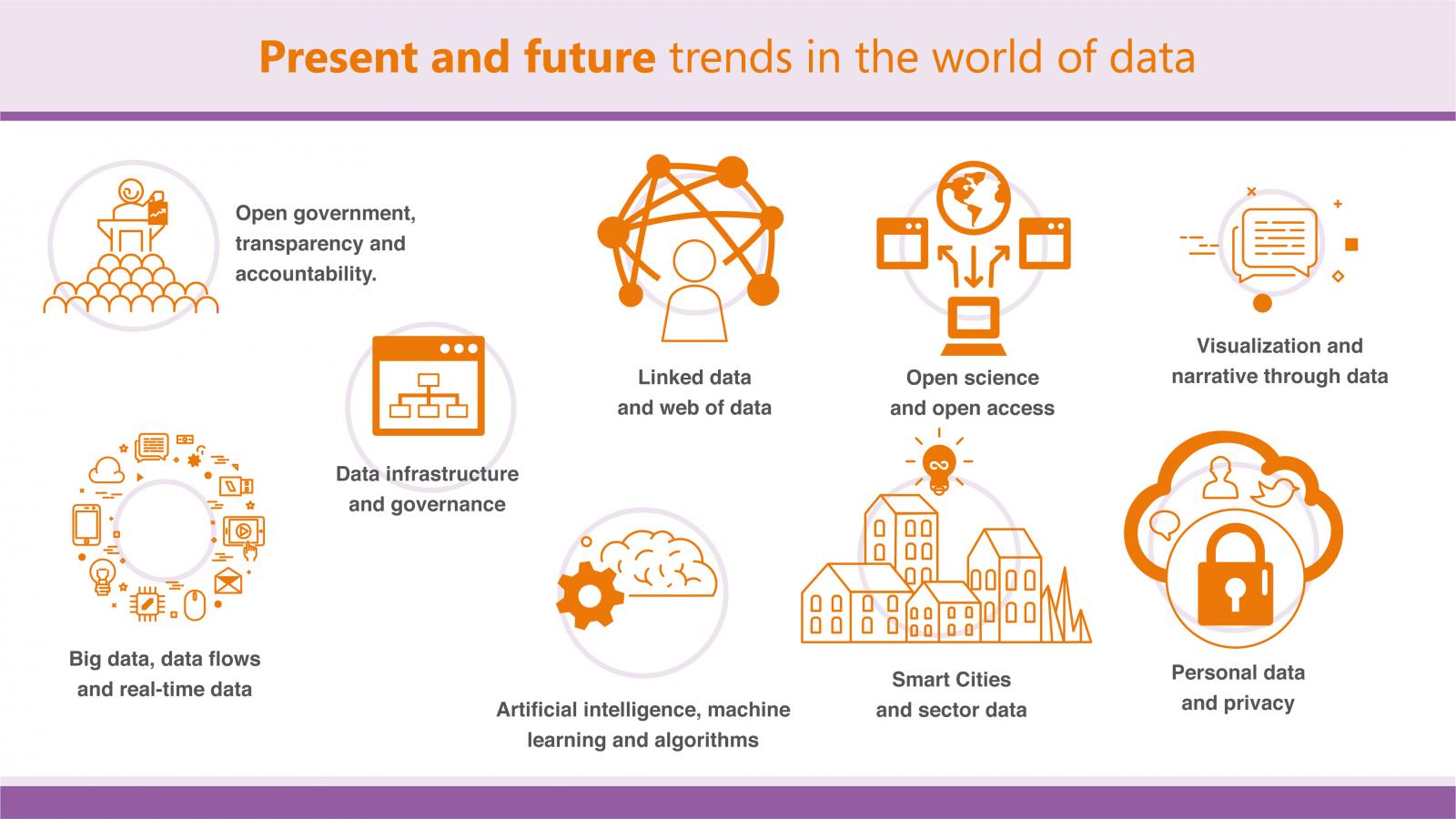
If we analyze it with perspective, the concept of open data is not so revolutionary or novel in itself. On one hand, the philosophy of openness and/ or re-use on which open data are based had long been established between us before its formal definition. On the other hand, the objectives of the open data movement are also very similar to those promoted by other communities which could in a certain way be considered similar, such as open source, open hardware, open content, open government or open science, among many others..
However, both the term "open data" and the community associated with it can both be considered relatively recent, beginning to gain popularity about ten years ago when a group of open government advocates established the eight principles of government open data during the meeting that took place in Sebastopol (California) in December 2007. Next, official open data initiatives of reference were launched by the United States (data.gov)) and the United Kingdom (data.gov.uk) , giving it the final push needed to become a new movement with its own identity.
Since then, the global open data community has made enormous progress, but it is also still far away from its initial objectives. At the same time, data in general is consolidating itself as the most valuable asset that most organizations have today. That is why, on the tenth anniversary since its formalization, the open data community reflects on its role in the past - looking at the achievements obtained so far - and also on its role in the upcoming future dominated for the data.

In this context, it makes sense to briefly review some of the current trends in the data world and what role open data could play in each of them, starting with those that are more related:
Open government, transparency and accountability
Although freedom of information and open data communities sometimes differ in their strategies, both share the common goal of facilitating citizens access to the information needed to improve transparency and public services. The potential benefit that can be obtained from the collaboration between both groups is, therefore, very significant, evolving from the right to information to the right to data. Nevertheless, after several efforts, collaboration has not yet been achieved as effectively as it would be desirable and there are also doubts about whether open data is really being used as an effective tool for transparency or as an excuse for not making a deeper transparency exercise.
Linked data and web of data
The goal of the Web of data is being able to create explicit connections between those data that are related to each other and those already available on the web, but not conveniently related. Not all linked data necessarily needs to be open, but it is clear from the very purpose of the linked data that the combination of both is what would let reach its maximum joint potential, as it is already the case, for example, with some large global data bases such as DBPedia, LexInfo, Freebase, NUTS or BabelNet.
Open Science and Open Access
Ironically, at this very moment in history when we have the best tools and technologies to distribute science and knowledge throughout the world, we are very busy putting new barriers to the use of those valuable data and that knowledge. The thriving movement of open access bet precisely to apply again the criteria of open data to scientific production, so that it becomes an intangible asset and thus accelerate our collaborations ability to generate new achievements for humanity.
Visualization and narrative through data
As more and more data is available to any organization or individual, the next key step will be providing the means so the value can be extracted from them. The ability, based on specific data, to be able to understand them, process them, extract their value and communicate it adequately, will be a very demanded skill in the next decade. The elaboration of stories from data is nothing more than a structured approach when communicating the knowledge that the data transmit uthrough three key elements: data, visualizations and narrative.
Big data, data flows and real-time data
In the present, organizations have to deal with a growing volume and variety of data. Big data processing techniques allow them to analyze these large volumes of information to reveal different patterns and correlations that will serve to improve decision-making processes. However, the great challenge is still how to perform this process efficiently on continuous data flows in real time. While big data promises an unprecedented analytical capacity, its combination with the open data philosophy will allow that power to be shared by all improving public services.
Artificial intelligence, machine learning and algorithms
Although artificial intelligence is increasingly present in several aspects of our daily lives, we could consider that we are still at a very early stage of what could become a global revolution. Artificial intelligence already has a relative success in some tasks that traditionally had always required of what we consider human intelligence to be carried out. For this to be possible, data-powered algorithms that support these automated systems are also necessary. A greater availability and quality of the open data will serve to feed these algorithms and, at the same time, also be able to improve them and audit their correct operation
Smart Cities and sector data
The open data movement is also in a period of transition in which they are beginning to focus efforts on publishing the data necessary to respond to specific problems instead of simply trying to publish any data in general. This thematic or sectorial approach is generally more efficient because it not only requires fewer resources for its execution, but is also more focused on the user needs and final beneficiaries of the data. In this regard, the specific area of Smart Cities or open cities stands out as an example of the integration of different technologies and data philosophies to improve the services offered to citizens.
Personal data and privacy
Today we spend a good part of our lives online and that is contributing to generate a lot of information about us. Thanks to these data we can enjoy new services of great utility, but this also have an important negative counterpart. In the case of a data leak, important personal information about our economic capacity, political positioning or consumption habits, among others, could be public. On the other hand, there are also increasingly unethical uses by some companies. Using the same principles of open data there are new forms of self-management of our personal data to achieve a balance between regaining control of our own data and the benefits we can obtain through exploitation, always with our express knowledge and consent.
Data infrastructures and data governance
The day-to-day management of data begins to be a task as valuable as complex for any organization in general, but particularly complicated for the administration due to its own volume and the need to combine different management models that also correspond to the different administrative levels. To face this management task with guarantees, it will be necessary to invest in the appropriate data infrastructures, both at a physical and management level. Establishing the technological frameworks and data governance models needed to be shared with agility will be an essential requirement to achieve an efficient management model in the future.
Taking into account the above aspects, it is possible that in the not too distant future we will stop treating open data as the only possible solution for the challenges posed to governments and begin to treat it as another key tool at our disposal that will be used in a more diluted and integrated way together with the other current trends in the data world and the openness that we have reviewed.